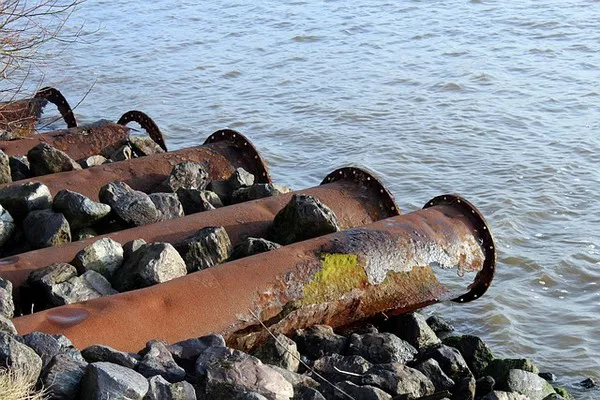The management of water resources and the treatment of various forms of water pollution have become critical aspects of modern urban planning and environmental protection. Two terms that are often used interchangeably but hold distinct meanings and implications are “sewage” and “wastewater.” In this article, we will delve into the differences between sewage and wastewater, examining their compositions, sources, and treatment processes. Understanding these distinctions is pivotal in safeguarding public health and maintaining the sustainability of our ecosystems.
What is Sewage?
Sewage is a specific subset of wastewater, characterized by its origin and content. It primarily consists of human and household waste, including feces, urine, toilet paper, and water from domestic activities such as bathing, washing dishes, and doing laundry. In essence, sewage is the wastewater that flows from toilets, drains, and sinks in homes, businesses, and institutions.
Sources of Sewage:
- Residential households
- Commercial buildings
- Industrial facilities with sanitary facilities
- Educational institutions
- Healthcare facilities
What is Wastewater?
Wastewater, on the other hand, is a broader term encompassing a wide range of water types that have been contaminated or altered in composition by human activities. It includes not only sewage but also industrial effluents, stormwater runoff, and agricultural runoff. Wastewater, in essence, is any water that is no longer fit for its original purpose due to contamination or pollution.
Sources of Wastewater:
- Sewage (as discussed earlier)
- Industrial discharges
- Rainwater runoff from streets and rooftops
- Agricultural runoff (contaminated by fertilizers and pesticides)
- Effluents from various processes (e.g., food production, chemical manufacturing)
Differences Between Sewage and Wastewater
Composition
The most significant difference between sewage and wastewater is their composition. Sewage is primarily composed of human and household waste, while wastewater includes a broader spectrum of water types, ranging from industrial discharges to stormwater runoff. Understanding these distinctions is crucial when designing treatment systems, as the composition of the wastewater directly impacts the treatment processes required.
Sources
Sewage originates primarily from residential, commercial, and institutional sources, where human activities generate wastewater containing organic and biological contaminants. In contrast, wastewater can come from various sources, including industrial processes, agricultural activities, and urban runoff. Each source introduces unique pollutants and contaminants into the wastewater, necessitating different treatment approaches.
Treatment Requirements
Due to its relatively consistent composition and predictable contaminants, sewage treatment systems are designed to primarily address organic matter and pathogenic microorganisms. The treatment process for sewage typically includes primary and secondary treatment, which involves physical and biological processes to remove solids and reduce the organic load.
Wastewater treatment, on the other hand, demands a more versatile and adaptable approach. Since it encompasses a wide range of contaminants from diverse sources, treatment facilities must be capable of handling various pollutants. This often involves multiple stages of treatment, including physical, chemical, and biological processes, to address the specific contaminants present in the wastewater.
Environmental Impact
While both sewage and wastewater can pose environmental challenges if not adequately treated, the environmental impact can vary significantly. Sewage typically contains high levels of organic matter and nutrients, which can lead to eutrophication in receiving water bodies if not treated properly. Eutrophication results in oxygen depletion, harming aquatic life.
Wastewater, depending on its source, can contain a broader array of pollutants, including heavy metals, chemicals, and toxins. Industrial wastewater, in particular, can be highly toxic and require specialized treatment to prevent harm to the environment.
Regulatory Considerations
Regulations governing sewage and wastewater management differ based on their source and potential environmental impact. Sewage is subject to sanitation and public health regulations, which require proper treatment and disposal to protect public health. Wastewater, especially industrial effluents, is subject to a more extensive regulatory framework that addresses specific contaminants and their potential ecological impacts.
Conclusion
In summary, sewage and wastewater are related but distinct terms, with sewage being a specific subset of wastewater. Understanding the differences between the two is essential for designing effective treatment systems, safeguarding public health, and protecting the environment.
Sewage primarily originates from residential, commercial, and institutional sources and consists of human and household waste. In contrast, wastewater encompasses a broader range of water types contaminated by various sources, including industrial discharges, stormwater runoff, and agricultural activities.
The treatment requirements for sewage and wastewater differ due to their varying compositions. Sewage treatment primarily focuses on removing organic matter and pathogens, while wastewater treatment demands a more versatile approach to address diverse contaminants. The environmental impact and regulatory considerations also vary, highlighting the need for tailored approaches to managing these two categories of water pollution.
Ultimately, by understanding the distinctions between sewage and wastewater, we can better manage these critical aspects of water resource management and environmental protection, ensuring the sustainable use of our precious water resources.

